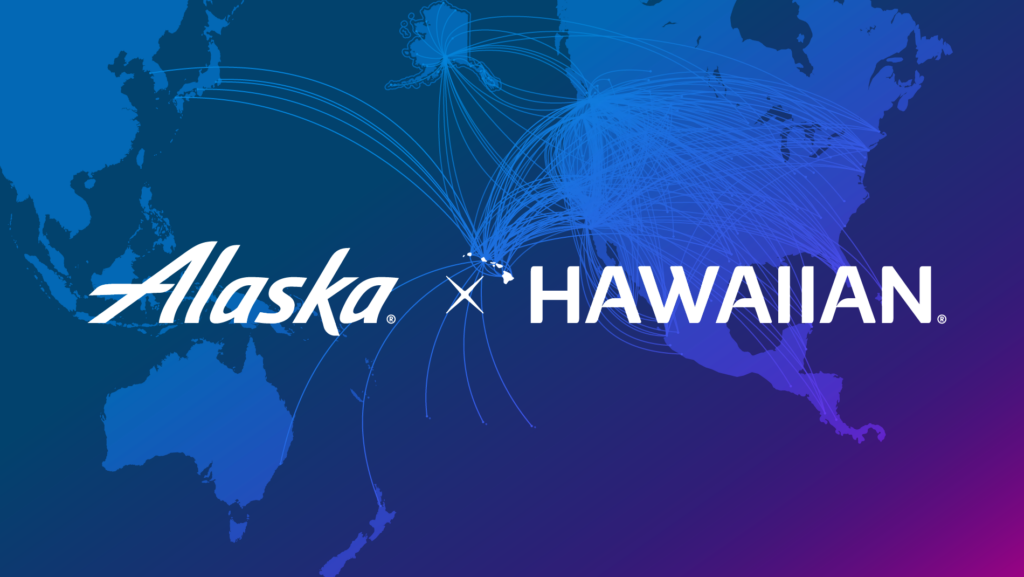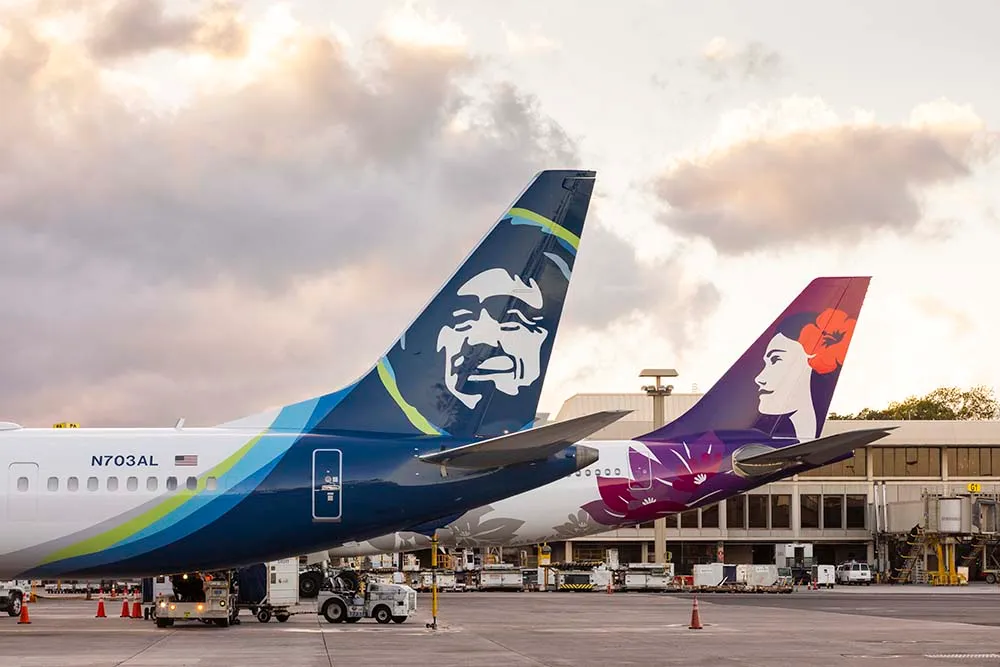Advertiser & Editorial Disclosure: The Bulkhead Seat earns an affiliate commission for anyone approved through the links below. This compensation may impact how and where links appear on this site. We work to provide the best publicly available offers to our readers. We frequently update them, but this site does not include all available offers. Opinions, reviews, analyses & recommendations are the author’s alone, and have not been reviewed, endorsed, or approved by any of these entities.
Alaska Airlines has reached a major milestone in its merger with Hawaiian Airlines, securing a single operating certificate (SOC) from the Federal Aviation Administration. This is a critical regulatory step that officially unifies the two carriers’ operations under one certificate while maintaining their distinct brands.
The approval, granted just over a year after Alaska and Hawaiian joined forces, signifies that both airlines have successfully aligned training, safety procedures, policies, and operating manuals. While this certification consolidates behind-the-scenes operations, passengers will continue to experience two unique brands: the familiar Alaska Airlines experience and Hawaiian’s signature island-style hospitality.
Under the new structure, both airlines now operate under a single call sign, “AS,” used by pilots and dispatchers for coordination with air traffic control. For travelers, however, both the Alaska (AS) and Hawaiian (HA) flight designators will continue to appear on schedules and tickets. One visible change for frequent flyers will be the adjustment of some Hawaiian Airlines flight numbers to avoid duplication between the two carriers. While the HA prefix will remain, certain routes will now operate under new numbers. Alaska notes that where possible, it has maintained familiar numbering to ease the transition for loyal Hawaiian passengers.
Receiving a single operating certificate lays the groundwork for Alaska and Hawaiian’s next integration steps. The airlines are now preparing to merge scheduling, reservation, and passenger service systems, which will deliver a more seamless travel experience for guests flying across both networks.

By April 2026, both carriers will transition to a single passenger service system (PSS). This is the central technology that manages flight bookings, check-in, and day-of-travel functions. Once implemented, all flights will officially carry the AS code, though Hawaiian’s distinctive branding and service will continue to be prominently featured. Customers booking travel will still be able to identify and select Hawaiian-operated flights, which will be clearly marked with Hawaiian’s iconic Pualani aircraft imagery across Alaska’s digital platforms.
The milestone also marks a shift in leadership for the combined organization’s Hawaii operations. Effective immediately, several Honolulu-based leadership roles take effect to ensure strong local oversight and continued focus on the islands. Diana Birkett Rakow, Alaska Airlines’ executive vice president of public affairs and sustainability, shifts into the role of CEO of Hawaiian Airlines, succeeding Joe Sprague, who is retiring after a distinguished career with Alaska Air Group. Jim Landers, formerly Hawaiian’s senior vice president for technical operations, becomes head of Hawaii operations, while Shelly Parker, previously vice president of station operations and inflight at Horizon Air, will now serve as head of Hawaii guest operations. These leaders will work closely with other Honolulu-based executives to ensure that Hawaiian’s identity, culture, and service traditions remain deeply rooted in the combined company’s strategy.
For travelers, Alaska and Hawaiian’s integration means greater connectivity, expanded route options, and a unified loyalty experience through the industry-leading Atmos™ Rewards program. Even as the two airlines move toward a single operational framework, Alaska Airlines emphasizes its commitment to preserving Hawaiian’s distinct heritage and hospitality while continuing to grow its global reach. The FAA certification marks not just a regulatory achievement but a transformational step toward creating one of the most comprehensive airline networks in the Pacific and continental United States with shared standards, shared systems, and a shared commitment to exceptional guest experiences.
Anthony’s Take: This is the next step in Alaska and Hawaiian Airlines aligning their operations. The carriers are much more unified and it’s great to see the progress happen so quickly.
(Image Credits: Alaska and Hawaiian Airlines.)
User Generated Content Disclosure: The Bulkhead Seat encourages constructive discussions, comments, and questions. Responses are not provided by or commissioned by any bank advertisers. These responses have not been reviewed, approved, or endorsed by the bank advertiser. It is not the responsibility of the bank advertiser to respond to comments.
Advertiser & Editorial Disclosure: The Bulkhead Seat earns an affiliate commission for anyone approved through the links above This compensation may impact how and where links appear on this site. We work to provide the best publicly available offers to our readers. We frequently update them, but this site does not include all available offers. Opinions, reviews, analyses & recommendations are the author’s alone, and have not been reviewed, endorsed, or approved by any of these entities.
